GPX4 restricts ferroptosis of NKp46+ILC3s to control intestinal inflammation
- PMID: 39300068
- PMCID: PMC11413021
- DOI: 10.1038/s41419-024-07060-3
GPX4 restricts ferroptosis of NKp46+ILC3s to control intestinal inflammation
Abstract
Group 3 innate lymphoid cells (ILC3s) are essential for both pathogen defense and tissue homeostasis in the intestine. Dysfunction of ILC3s could lead to increased susceptibility to intestinal inflammation. However, the precise mechanisms governing the maintenance of intestinal ILC3s are yet to be fully elucidated. Here, we demonstrated that ferroptosis is vital for regulating the survival of intestinal ILC3. Ferroptosis-related genes, including GPX4, a key regulator of ferroptosis, were found to be upregulated in intestinal mucosal ILC3s from ulcerative colitis patients. Deletion of GPX4 resulted in a decrease in NKp46+ILC3 cell numbers, impaired production of IL-22 and IL-17A, and exacerbated intestinal inflammation in a T cell-independent manner. Our mechanistic studies revealed that GPX4-mediated ferroptosis in NKp46+ILC3 cells was regulated by the LCN2-p38-ATF4-xCT signaling pathway. Mice lacking LCN2 in ILC3s or administration of a p38 pathway inhibitor exhibited similar phenotypes of ILC3 and colitis to those observed in GPX4 conditional knock-out mice. These observations provide novel insights into therapeutic strategies for intestinal inflammation by modulating ILC3 ferroptosis.
© 2024. The Author(s).
Conflict of interest statement
The authors declare no competing interests.
Figures
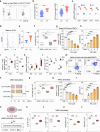

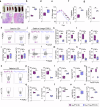
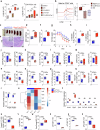
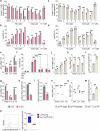

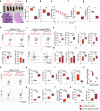

Similar articles
-
NKp46+ ILC3s promote early neutrophil defense against Clostridioides difficile infection through GM-CSF secretion.Proc Natl Acad Sci U S A. 2024 Nov 5;121(45):e2416182121. doi: 10.1073/pnas.2416182121. Epub 2024 Oct 30. Proc Natl Acad Sci U S A. 2024. PMID: 39475653 Free PMC article.
-
RIPK3 and caspase-8 interpret cytokine signals to regulate ILC3 survival in the gut.Mucosal Immunol. 2024 Dec;17(6):1212-1221. doi: 10.1016/j.mucimm.2024.08.004. Epub 2024 Aug 11. Mucosal Immunol. 2024. PMID: 39137882 Free PMC article.
-
WASH maintains NKp46+ ILC3 cells by promoting AHR expression.Nat Commun. 2017 Jun 7;8:15685. doi: 10.1038/ncomms15685. Nat Commun. 2017. PMID: 28589939 Free PMC article.
-
Group 3 innate lymphoid cells: A trained Gutkeeper.Immunol Rev. 2024 May;323(1):126-137. doi: 10.1111/imr.13322. Epub 2024 Mar 16. Immunol Rev. 2024. PMID: 38491842 Review.
-
ILC3 function as a double-edged sword in inflammatory bowel diseases.Cell Death Dis. 2019 Apr 8;10(4):315. doi: 10.1038/s41419-019-1540-2. Cell Death Dis. 2019. PMID: 30962426 Free PMC article. Review.
Cited by
-
Capsaicinoids and capsinoids of chilli pepper as feed additives in livestock production: Current and future trends.Anim Nutr. 2025 Jun 19;22:483-501. doi: 10.1016/j.aninu.2025.03.014. eCollection 2025 Sep. Anim Nutr. 2025. PMID: 40896497 Free PMC article. Review.
-
Mechanism of cell death and its application in the repair of inflammatory bowel disease by mesenchymal stem cells.Front Immunol. 2025 Jun 4;16:1597462. doi: 10.3389/fimmu.2025.1597462. eCollection 2025. Front Immunol. 2025. PMID: 40534879 Free PMC article. Review.
-
Redox mechanism of glycerophospholipids and relevant targeted therapy in ferroptosis.Cell Death Discov. 2025 Aug 1;11(1):358. doi: 10.1038/s41420-025-02654-y. Cell Death Discov. 2025. PMID: 40744916 Free PMC article. Review.
References
MeSH terms
Substances
Grants and funding
LinkOut - more resources
Full Text Sources
Miscellaneous

